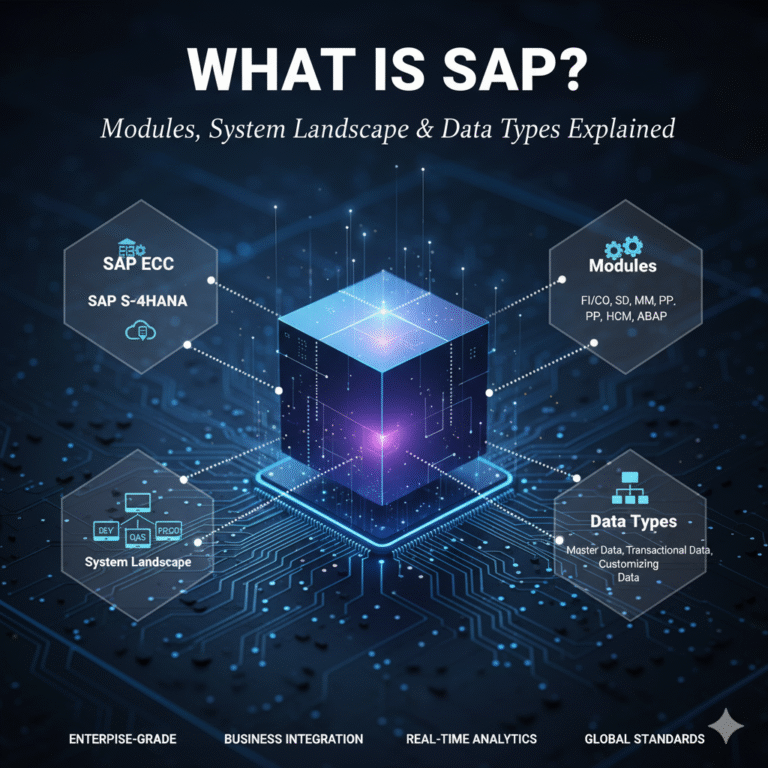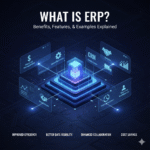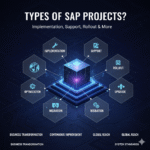Introduction to SAP
When people ask, “What is SAP?”, the simple answer is that SAP stands for Systems, Applications, and Products in Data Processing. Founded in 1972 by five ex-IBM engineers in Germany, SAP has now grown into the world’s leading provider of Enterprise Resource Planning (ERP) software. Its powerful tools help organizations integrate finance, logistics, sales, human resources, and more into one centralized system.
Today, the most widely used version is SAP ECC 6.0 with Enhancement Package 8 (EHP 8), which provides advanced features for businesses to run more efficiently. With multiple modules, a robust landscape, and secure data management, SAP continues to be the backbone of global enterprises.

Popular SAP Modules
SAP offers different modules to handle specific business processes:
- SAP FICO – Finance and Controlling
- SAP MM – Material Management
- SAP SD – Sales and Distribution
- SAP HR – Human Resources
- SAP PP – Production Planning
- SAP Basis – System Administration
- SAP CRM – Customer Relationship Management
- SAP ABAP – Programming Language
- SAP QM – Quality Management
- SAP PM – Plant Maintenance
- SAP PS – Project Systems
Each module is designed to streamline a specific function of the enterprise, and together they create a fully integrated system.
SAP System Landscape
The SAP System Landscape defines how SAP environments are set up during implementation. It typically consists of three systems:
- Development (DEV): Used to configure and customize SAP according to business needs. All changes are saved under a Transport Request (TR).
- Quality (QAS): Changes from the development system are moved here for testing and training before going live.
- Production (PRD): The live environment where real business transactions are executed daily.
This three-tier landscape ensures that businesses can test changes before deploying them, reducing errors and downtime.
Transport Request in SAP
A Transport Request (TR) is the medium used to move configuration or development changes from one system to another (DEV → QAS → PRD). Each TR is assigned a unique number, and when it is imported, the system automatically copies the required table entries from one server to the target server. This process ensures data integrity and smooth system operations.
Types of Data in SAP
In SAP, different types of data are used to maintain accurate business operations:
- Master Data – Core data that remains constant over time (e.g., Vendor, Customer, Material).
- Transaction Data – Day-to-day business process data (e.g., Purchase Orders, Sales Orders, Invoices).
- Configuration Data – System settings defined during implementation.
This combination of data ensures SAP can manage both operational and strategic processes effectively.
Conclusion: Why Businesses Rely on SAP
SAP is more than just software—it’s a complete enterprise solution that helps organizations manage their resources, processes, and people efficiently. With its wide range of modules, structured landscape, and secure data handling, SAP continues to lead the ERP market worldwide. From small companies to global enterprises, SAP provides the flexibility and innovation needed to stay competitive in today’s fast-paced business world.



